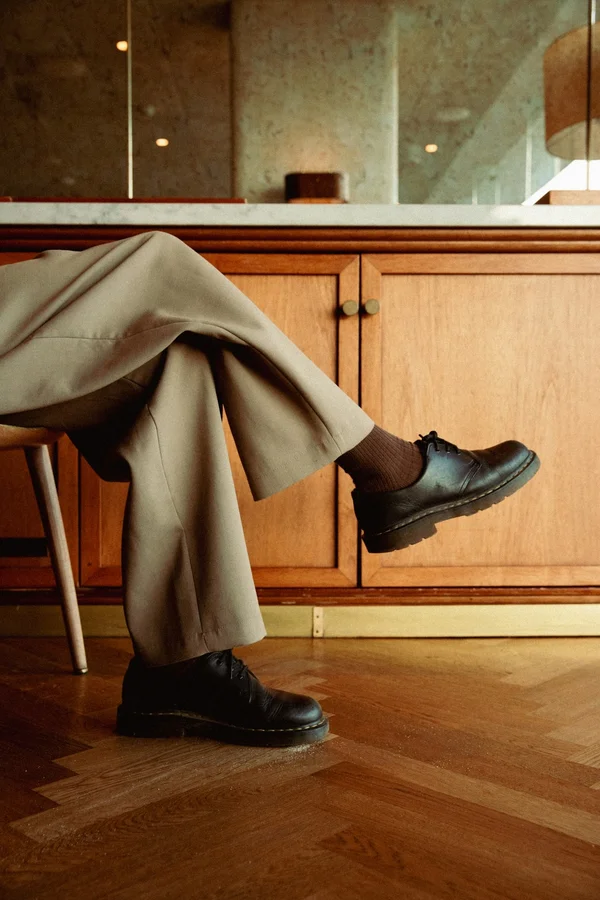...
The SAG-Aftra & WGA Strike: let’s talk about unions.
By Nona Dimitrova published 16/10/2023
When talking about sustainable fashion, at least over on our blog, we usually keep to the environmental side of things: how overproduction and overconsumption affect the planet. But the other, equally important side of this conversation is to do with the very first step of clothing production: the garment workers who actually make our clothes.
With clothing factories being spread out far and wide across our world, sometimes it can feel like an overwhelming topic to breach which can’t really be discussed under one single umbrella term. While we can confidently say that “fast fashion is detrimental to the planet,” it’s harder to generalise garment factories as a lot of them operate independently from one another.
But we may have found a way; let’s talk about the writers’ and actors’ strike, and see how that analogy plays out when it comes to garment workers and one's right to unionise.
On 2nd May 2023 the Writer’s Guild of America (WGA) went on strike, and on 14th July 2023 they were joined by Screen Actors Guild – American Federation of Television and Radio Artists (SAG-AFTRA). The strikes, which are not far from the rail strikes we are all-too familiar with in the U.K. include abstaining from work, picketing and involving the general public (aka, the consumer) in the conversation. Because at the end of the day, the big guy being striked against (in this case that would be the Alliance of Motion Picture and Television Producers, or AMPTP), is most inclined to agree to the terms being demanded, when the consumer is unhappy.
The strike is mainly lead by changes in the industry caused by streaming and its effect on residuals, as well as other new technologies like AI and digital recreation. It is the first time since 1960 that the two unions have striked together, and the biggest recent disruptor to the American film and television industries since the Covid-19 pandemic in 2020.
As of 25th September 2023, the writers’ strike is essentially over, with the WGA and AMPTP coming to a tentative agreement which both sides are happy with. The actors’ strike continues, but there’s hope that that will come to mutual agreement soon too, considering the amount of overlap between the two unions’ demands.
So now that we’ve got that bulky introduction out of the way, let’s talk about what we really came here to discuss: the importance of unions.
This highly publicised strike was a testament to how effective unions and strikes really can be, especially when the wider consumer is also part of the conversation. If we’re using the AMPTP as an example for the ‘big guy on top,’ we can see how no working actors and writers become an issue. Projects are halted. If a project is wrapped and finished, your actors can’t go on press tours and festivals to actually promote it. You end up delaying. All of this creates profit loss in the long-run. Meanwhile smaller studios (such as A24) are allowed to proceed with production and promotion because they agreed to the unions’ terms, putting them in a unique position of rising through the ranks above the bigger studios.
Now what if we collectively imagine a world where fast fashion conglomerates are forced to halt and/or delay production due to cross-union garment worker and supplier strikes? But small, independent brands, honouring their rights and demands for a living wage and safe working environment (to name just a few issues with the garment industry) were allowed to continue production, giving them the same unique headstart which A24 has?
While a big part of the sustainable fashion conversation centres around topics concerning the environment, worker welfare is an equally important player in that conversation.
According to Labour Behind the Label, only a small percentage of all garment workers are actually unionised, and many of these are in unions established by factory managements to please their clients (known as yellow unions). While many workers from all over the world are fighting for their right to unionise, factory managers often respond by adopting “union-busting” tactics, which can include intimidation, abuse and violence.
Many apparel companies, especially high-production, fast-fashion ones, have moved their garment production outside of the primary countries where they operate or target consumers.
Lower cost of production = lower cost of the garment = more sales = more profit.
Moving to these countries was a decision in pursuit of the lowest wages, but also a more docile workforce. Countries like China, Indonesia, Bangladesh, Turkey, Vietnam and The Philippines largely restrict the right to unionise and primarily hire (young) women, migrants and workers on uncertain contracts, because all of the above makes them less likely to ‘speak up’.
Many of these brands have (not surprisingly at all) faced some serious allegations in regards to the welfare of their workers.

We've also previously written about the impact of fast fashion brands like Zara (as well as their parent company, Inditex), as well as Boohoo.
Both of those cover the brands' shortcomings (to put it very lightly) when it comes to assuring the welbeing of their garment workers.
The sustainable fashion movement is just as much about protecting the environment, as it is about protecting the people on this planet. And the fashion industry is not far from the image we painted in the beginning: greedy CEOs (or film producers and execs) at the top, and overworked and underpaid workers (or writers, actors*) at the bottom of the chain.
So what can we do?
- Check out Labour Behind the Label for any initiatives or petitions to sign
- Donate to Fashion Revolution - an organisation actively helping garment workers and fighting for their rights
- See active ways to get involved with War on Want - they have listings of protests and petitions to sign that improve garment workers live and don’t prioritise the planet
- Sign up to Fashion Revolution Newsletter
- Spread the word with free assets from Fashion revolution, here
- Hold brands to account and call them out publicly
- Boycott fast fashion
Want to discuss this with us further? Join the conversation on our socials @Whering__ on Twitter and Instagram.
*This is not to insinuate that the actors we see on the big screen and the writers whose names we see rolling down the credits are struggling to make ends meet. Despite many big names joining the WGA & SAG-AFTRA picket lines, it was a form of support for the union and the abundance of other actors and writers who are not 'household names'. Many of whom aren’t paid enough to qualify for health insurance.
Something on your mind?
Share your thoughts with Whering community.
If you have an idea for an article around fashion, culture, environment, news, wellness, shopping or DIY, submit a pitch to us!



